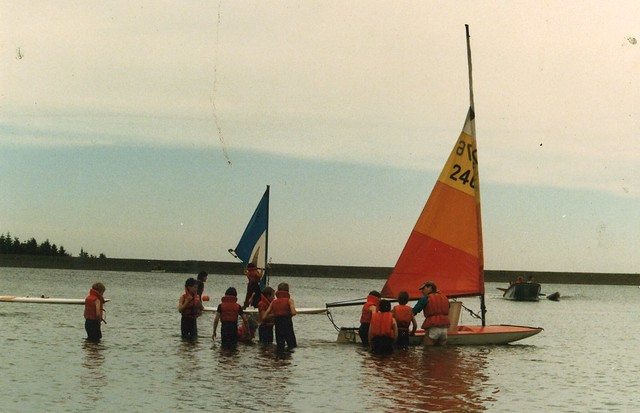Team:Dundee/HumanPractice
From 2013.igem.org
Kyleharrison (Talk | contribs) (Created page with "{{:Team:Dundee/Templates/Navigationbar}} <html> <html lang="en"> <!-- Begin page content --> <div class="container"> <!-- Title --> <div class="page-he...") |
Kyleharrison (Talk | contribs) |
||
| Line 9: | Line 9: | ||
<!-- Title --> | <!-- Title --> | ||
<div class="page-header"> | <div class="page-header"> | ||
| - | <h2><b> | + | <h2><b>Human Practices Overview</b> </h2> |
</div> | </div> | ||
<!-- Title End --> | <!-- Title End --> | ||
| Line 15: | Line 15: | ||
<div class="row" style="text-align:justify;margin-top:-20px;"> | <div class="row" style="text-align:justify;margin-top:-20px;"> | ||
<div class="span6"> | <div class="span6"> | ||
| - | <p> | + | <p>For Dundee iGEM team, a human practice is developing strong bonds between people and science while encouraging strong scientific involvement in current problems and legislations. The motivation behind our project lends itself to human practices as we are battling a local problem which concerns human safety and usage of fresh water reservoirs.<br> |
| + | The Dundee Life Sciences sector contributes to 16% of the local economy, making it crucial that we keep the public involved in what we do.</p> | ||
| - | + | <p>We initiated a political campaign to inform the public about the issue and question the lack of scientific back up in current legislations. To bridge the gap between the scientific knowledge and public legislation, we brought together representatives of local parliament, environmental agencies, respected researchers (working in this field), local park rangers and Friends of the Earth. Together they discussed synthetic biology and how to deal with algal blooms.</p> | |
| - | + | <p>Additionally, we approached a range of age groups to educate them on the problem caused by algal blooms and propose how synthetic biology may be a solution. We strived to engage people from all backgrounds by attending events or setting up meetings with groups from different disciplines such as:</p> | |
| - | + | <ul> | |
| + | <li>School Science Workshops</li> | ||
| + | <li>Undergraduate teaching practicals</li> | ||
| + | <li>Cafe Science</li> | ||
| + | <li>Dundee tech meet up</li> | ||
| + | <li>Friends of the Earth </li> | ||
| + | <li>SEPA – Scottish Environmental Protection Agency</li> | ||
| + | </ul> | ||
| - | + | <p>Furthermore, we took advantage of current social media set ups to engage a larger audience. Facebook, Twitter, Youtube, Flickr and Google+ were all updated on a regular basis communicate our progress and achievements.</p> | |
| + | |||
| + | <p>Some novel approaches we took to captivating the public were through a comic book and video game. These entertained our audience, particularly the younger generation, and demonstrated a humorous side to synthetic biology.</p> | ||
| + | |||
| + | <p>Dundee’s slogan is “One City, Many Discoveries” in honour of Dundee's history of scientific activities. </p> | ||
| - | |||
| - | |||
</div> | </div> | ||
Revision as of 15:02, 15 August 2013
Human Practices Overview
For Dundee iGEM team, a human practice is developing strong bonds between people and science while encouraging strong scientific involvement in current problems and legislations. The motivation behind our project lends itself to human practices as we are battling a local problem which concerns human safety and usage of fresh water reservoirs.
The Dundee Life Sciences sector contributes to 16% of the local economy, making it crucial that we keep the public involved in what we do.
We initiated a political campaign to inform the public about the issue and question the lack of scientific back up in current legislations. To bridge the gap between the scientific knowledge and public legislation, we brought together representatives of local parliament, environmental agencies, respected researchers (working in this field), local park rangers and Friends of the Earth. Together they discussed synthetic biology and how to deal with algal blooms.
Additionally, we approached a range of age groups to educate them on the problem caused by algal blooms and propose how synthetic biology may be a solution. We strived to engage people from all backgrounds by attending events or setting up meetings with groups from different disciplines such as:
- School Science Workshops
- Undergraduate teaching practicals
- Cafe Science
- Dundee tech meet up
- Friends of the Earth
- SEPA – Scottish Environmental Protection Agency
Furthermore, we took advantage of current social media set ups to engage a larger audience. Facebook, Twitter, Youtube, Flickr and Google+ were all updated on a regular basis communicate our progress and achievements.
Some novel approaches we took to captivating the public were through a comic book and video game. These entertained our audience, particularly the younger generation, and demonstrated a humorous side to synthetic biology.
Dundee’s slogan is “One City, Many Discoveries” in honour of Dundee's history of scientific activities.



 "
"
